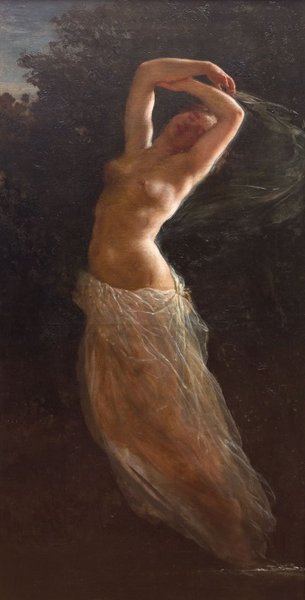In this ongoing series for Fine Art Today, we take a longer look at the history and features of a soon-to-be-available artwork of note. This week: Wojciech Gerson, “Dawn.”
A beautiful original from the hand of one of Poland’s most celebrated 19th-century artists heads to auction Saturday, August 13 in Sopot, Poland. A longtime professor of the School of Fine Arts in Warsaw, Wojciech Gerson (1831-1901) was among the foremost champions of the Polish school of Realism during the mid-19th century.
Unfortunately, original works by Gerson are rare — making the opportunity to own or even view one incredibly exciting. During World War II, the Nazis apparently stole a large quantity of his works, which remain unrecovered to this day.
Available for purchase this week is the artist’s compelling “Dawn” — a beautiful image of a single female subject. Framed within a dramatic vertical format, the bare-chested subject raises her arms above her head as her entire body appears to be pulled or drawn by an unknown source to the viewer’s left. Although the piece undeniably shows its age, Gerson’s Romantic roots are evident in the striking pose and in the euphoric relaxation that falls over the woman’s face.
Auction estimates are between $57,000 and $62,000. To view the full catalogue, visit Sopocki Dom Aukcyjny.
This article was featured in Fine Art Today, a weekly e-newsletter from Fine Art Connoisseur magazine. To start receiving Fine Art Today for free, click here.
Featured Lot: Wojciech Gerson, “Dawn”








